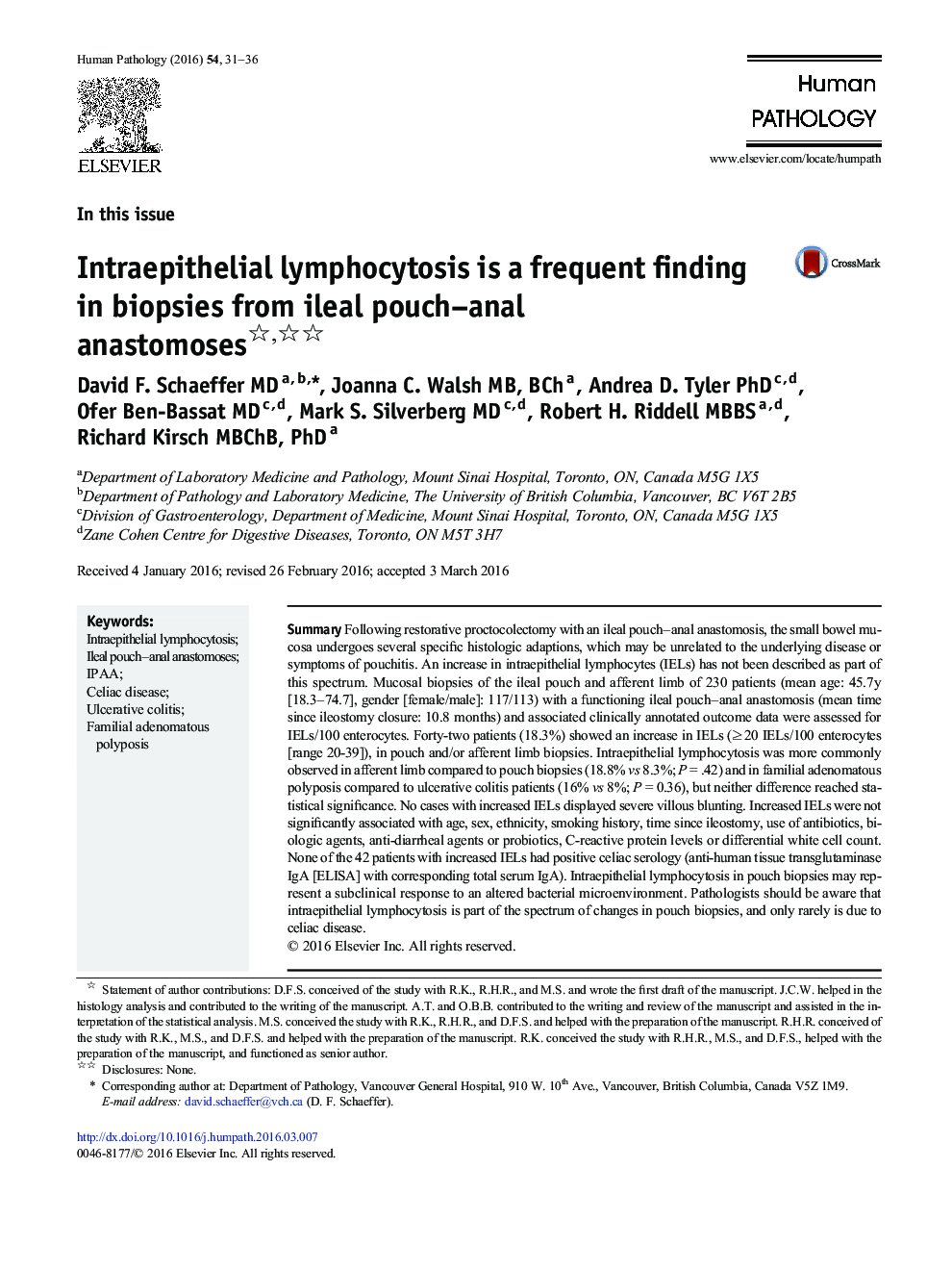| Article ID | Journal | Published Year | Pages | File Type |
|---|---|---|---|---|
| 6215401 | Human Pathology | 2016 | 6 Pages |
SummaryFollowing restorative proctocolectomy with an ileal pouch-anal anastomosis, the small bowel mucosa undergoes several specific histologic adaptions, which may be unrelated to the underlying disease or symptoms of pouchitis. An increase in intraepithelial lymphocytes (IELs) has not been described as part of this spectrum. Mucosal biopsies of the ileal pouch and afferent limb of 230 patients (mean age: 45.7y [18.3-74.7], gender [female/male]: 117/113) with a functioning ileal pouch-anal anastomosis (mean time since ileostomy closure: 10.8 months) and associated clinically annotated outcome data were assessed for IELs/100 enterocytes. Forty-two patients (18.3%) showed an increase in IELs (â¥Â 20 IELs/100 enterocytes [range 20-39]), in pouch and/or afferent limb biopsies. Intraepithelial lymphocytosis was more commonly observed in afferent limb compared to pouch biopsies (18.8% vs 8.3%; P = .42) and in familial adenomatous polyposis compared to ulcerative colitis patients (16% vs 8%; P = 0.36), but neither difference reached statistical significance. No cases with increased IELs displayed severe villous blunting. Increased IELs were not significantly associated with age, sex, ethnicity, smoking history, time since ileostomy, use of antibiotics, biologic agents, anti-diarrheal agents or probiotics, C-reactive protein levels or differential white cell count. None of the 42 patients with increased IELs had positive celiac serology (anti-human tissue transglutaminase IgA [ELISA] with corresponding total serum IgA). Intraepithelial lymphocytosis in pouch biopsies may represent a subclinical response to an altered bacterial microenvironment. Pathologists should be aware that intraepithelial lymphocytosis is part of the spectrum of changes in pouch biopsies, and only rarely is due to celiac disease.
